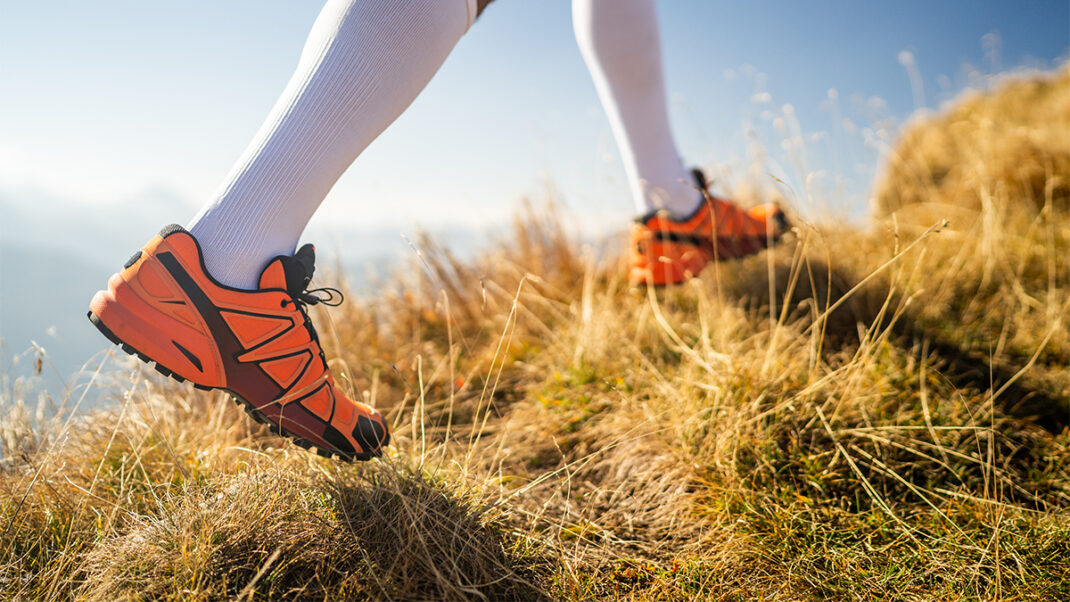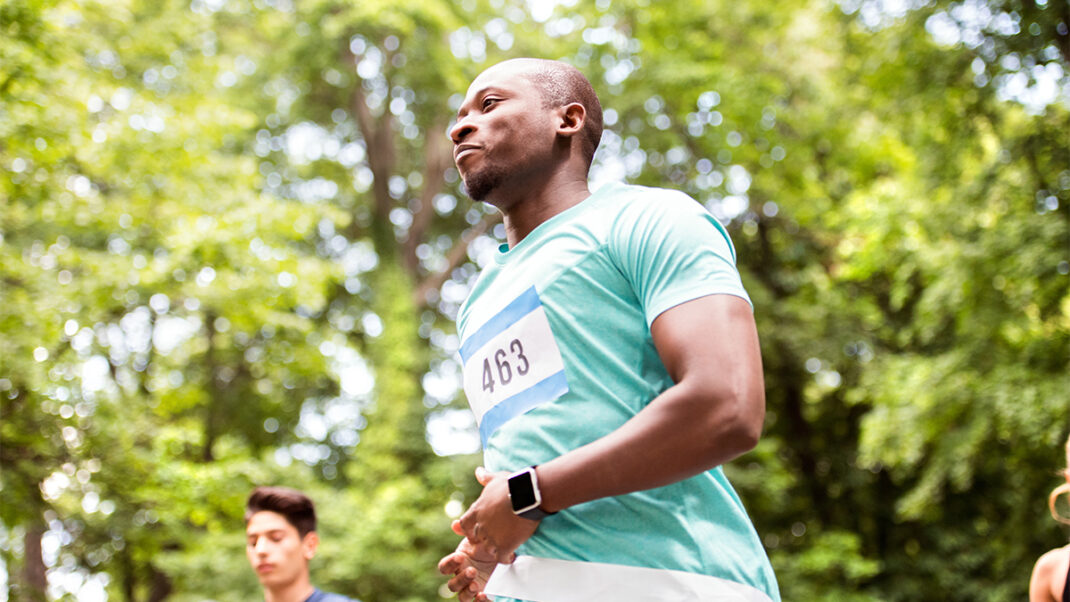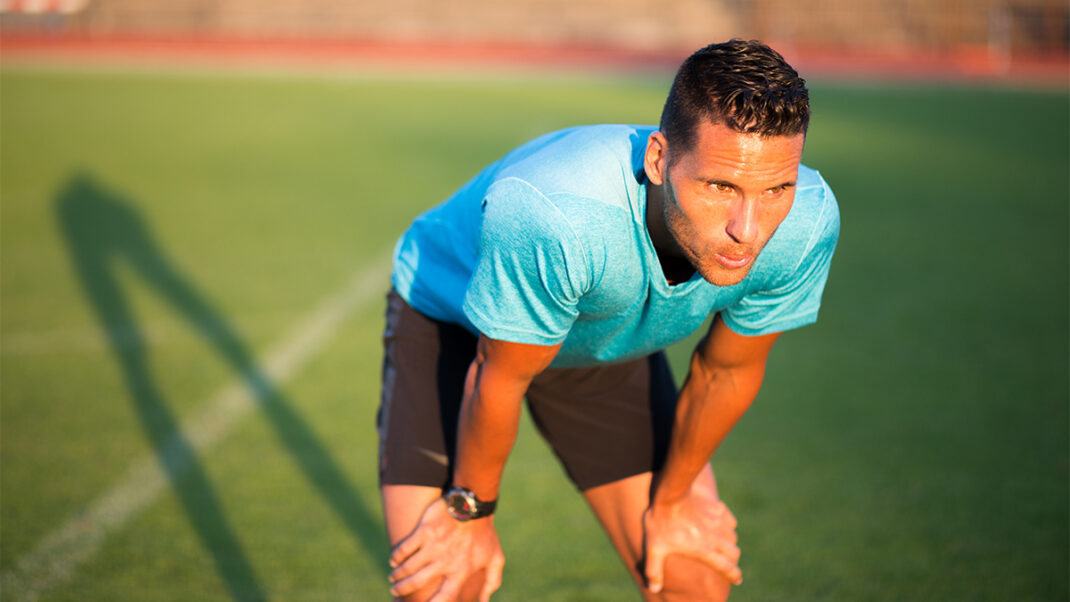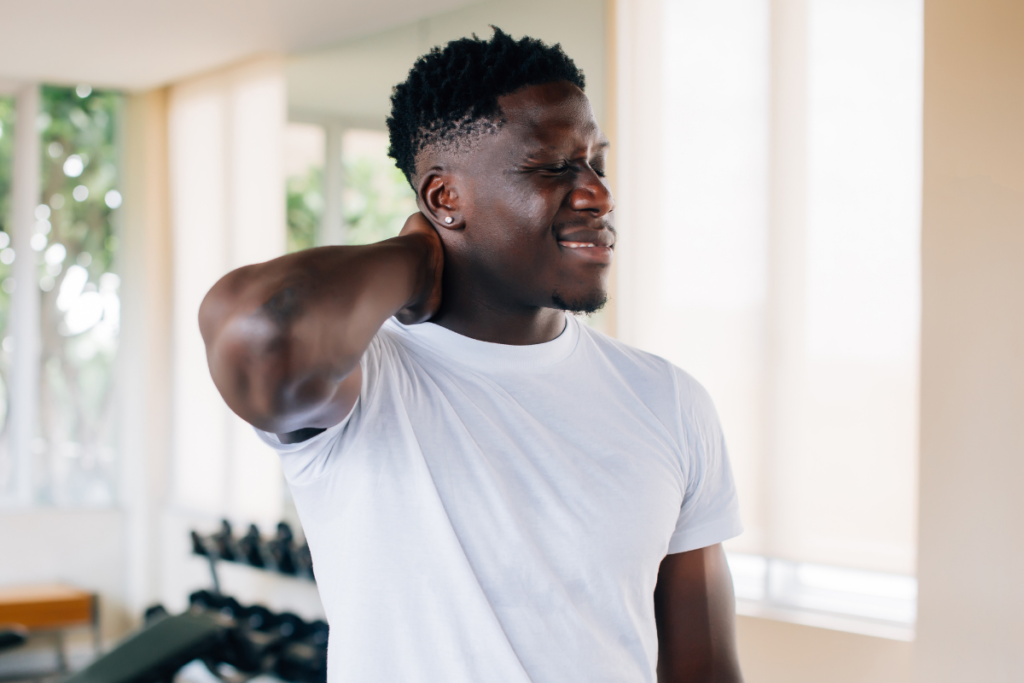in Times of Crisis
As fitness professionals, we are well aware of the beneficial effects of exercise during stressful situations. But on September 11, 2001, managers and staff at fitness facilities worldwide wrestled with how best to help their members cope in a time of unprecedented tragedy and fear. Was it best to keep clubs open and try to offer members some semblance of normalcy? Could staff be expected to carry on and teach regular classes? What would be the right way to respond if a club did stay open? And when should normal activities resume if the club closed down for a while?
While the challenges faced in the aftermath of September 11 were unparalleled in scope, the managers and staff of every fitness facility should consider ways their club can help its own community in times of crisis. Whether it’s by offering physical shelter in a snowstorm or providing a place to mentally regroup after a national crisis, fitness facilities can and should make a difference in troubled times. Here’s a look at how facilities worldwide recently offered a helping hand by reaching out to both their members and the community at large with special programming and innovative approaches.
First Responses
Almost immediately after the World Trade Center (WTC) was attacked, the New York City fitness community launched a concerted effort to deploy its considerable resources in the rescue mission. The area surrounding the WTC site, which includes the financial district, is home to several fitness clubs. New York Sports Clubs (NYSC), Equinox Fitness Clubs and the New York Health and Racquet Club (NYHRC) all offered various types of shelter and assistance to both civilians and rescue workers.
At its Wall Street location, NYSC served as a temporary relief center, assisting the Red Cross in providing food, cots, medical supplies and water starting the day after the incident. At the same time, the staff at the nearest NYHRC furnished rescue workers with showers and massages 24 hours a day for two weeks following the event. At Equinox, located across the street from the New York Stock Exchange, managers and staff catered to the needs of the civilian population—members and nonmembers alike.
As daunting as September 11 was for NYC fitness professionals, the period following the attacks was equally demanding. Catherine King, group fitness manager at Equinox, was confronted with the task of reopening her club to members the week of September 17. With the help of other staff members, including former general manager Denise Dronsick and maintenance manager Alex Mass, King struggled to create a sense of normalcy and provide refuge for an extremely traumatized clientele. Those who wandered into the club were greeted with a banner that read: “Welcome Back, Equinox Members and Friends.” Staff lugged 5 gallons of coffee and 6 dozen bagels a distance of 15 blocks with the help of firemen and investment bankers. Air quality was still too poor for working out, but people came in anyway. “I was so surprised that the people who came in weren’t asking when they would be able to work out,” says Dronsick. “They wanted to know how we were.”
When regular classes resumed at Equinox on September 18, instructors faced what may very well be the ultimate challenge of their careers. “We had to return to work, to normalcy and continuity,” says King. “It was really hard for members to come back on Monday and see everything outside so changed. Our clients invest a lot of time down here in their jobs. We are a place to get away from the horror. This is their respite, their outlet.”
Jodi Cornish, an Equinox personal fitness trainer, feels her interactions with members have since changed in a way she never expected. “A lot of the bankers who train here [used to be] pretty focused and anxious to get back to work. Now they want to talk to me and keep talking.”
The Times, They Are A-Changin’
According to a recent article in the Wall Street Journal, people across the nation are more committed to fitness than before, as evidenced by the increase in new gym memberships since September 11 (Wei 2001). Crunch Fitness, with locations in New York, Los Angeles, Miami, Chicago, San Francisco and Atlanta, saw a 19 percent increase in gym usage and a 29 percent increase in new memberships in the two weeks following the terrorist attacks. In their New York clubs in particular, both NYSC and Bally Fitness have experienced similar increases in member participation, according to the International Health, Racquet and Sportsclub Association (Wei 2001). And with some exceptions, this upward trend has been repeated to varying degrees around the country as people have become motivated to exercise.
But while the outlook is positive for the fitness industry, it is important to understand that people who are joining gyms or using the gym more frequently in response to increased fear and stress have special needs that standard programming may not meet. Although the motivations for initiating or intensifying personal fitness regimens vary from person to person, fear, stress and anxiety are common denominators. Fitness professionals everywhere have been busy formulating different ways to respond to these reactions. Approaches run the gamut, from changing class schedules to adding new mind-body programming to providing a physical haven from the stressors of the day.
Fitness Facilities as Refuge
On the day of the attacks, the Huntington YMCA in Long Island, New York, extended its business hours past its normal closing time. Although this was done in part to provide day care—because some of the community’s working parents were unable to get home that day—some people objected to the decision to stay open. In the days that followed, the Y became a touchstone and a point of reference as people moved through the various stages of grief, according to fitness coordinator Kathe Burlage. “The most difficult thing was to function as professionals. Everyone’s emotions were open and unguarded. We had to try to do and say the right things and be there for people.”
When Burlage found out that one of her own students had lost her husband in the attacks, she decided to use her classes as a healing vehicle. She created a class called “BODY PEACE,” which combines t’ai chi moves with yoga-influenced stretches to help clients reduce their stress levels. Burlage says attendance in all classes, especially yoga-based classes like “BODY PEACE,” is way up. For details on this type of programming, see “ÔÇÿBODY PEACE’ Sample Class” on this page.
Across the country, fitness professionals have been focusing on ways to bring peace to their clients by allowing them to release anxiety through motion. Most professionals interviewed for this article report an increased demand for mind-body classes and renewed interest in cardio kickboxing and the martial arts.
In fact, for the last several months, fitness facilities have become a refuge for people in many ways. As the war escalates amid ongoing threats of biological and chemical terrorism, people everywhere are seeking ways to deal with their fears.
Liz Neporent, director of special projects for myfitnessexperts .com, a Web site that provides one-on-one training to clients around the world, says the sense of fear is widespread. “This has been a catalyst for change. It’s as if people have a ‘now-or-never attitude’ toward their fitness goals.” Also, they may have come to realize that stamina, reflexes, coordination, reaction time and lung capacity may mean the difference between life and death in future attacks. “People everywhere want to be mentally, spiritually and physically prepared for whatever may come,” she says. Neporent reports about a 25 percent increase in traffic to her Web site since September 11, with a greater number of corporate clients requesting yoga workouts.
Nourishing a Community’s Spirit
Summer Autio, a group fitness instructor at Del Mar Workout in Southern California, teaches a class called “SpiritDance,” which she describes as a “cultural explosion of sounds and music infused with yoga and expressive movement.” Autio, who is currently undergoing treatment for hepatitis C and melanoma, understands the power of using movement and
a sense of community to heal. Immediately following the attacks,
she formed a circle with her students at the end of class, exhorting them to express their fear, sadness and grief and even their joy in coming together by collectively sobbing, yelling and laughing. The response was tremendous, and her students left feeling lighter. Since then, she has started every class with a nonreligious prayer and an acknowledgment that something is happening. Her goal is to open her students’ hearts—both literally and figuratively. By using yogic “heart-centered” movements to open the chest, she helps students release their stress.
At the Los Angeles-based studio Groove, Gillian Marloth and Teigh McDonough offer a 90-minute class called Yoga Booty Ballet™, a hybrid of yoga, muscle sculpting and ballet. Using funk, hip hop and R&B music, they start each class with a 20-minute expressive-dance warm-up, which Marloth refers to as the “booty aspect.” Then they move into the actual workout. After waning attendance immediately following September 11, Yoga Booty Ballet is now regularly packed. Marloth attributes the class’s success to the fact that participants are looking for deeper meaning in their lives. “I think a lot of people are turning on to their body because it connects them to the earth,” she says. ‰ “The body is a gateway to the spirit, and I believe that this class connects the body thoroughly to the spirit.”
Since the attacks, Krista Popowych, program director of The Fitness Group in Vancouver, British Columbia, has been encouraging her participants to modify their workouts to reflect their feelings. “Our goal at The Fitness Group is to create a fitness haven filled with great energy, positive experiences and a commitment to educating your body and mind while rejuvenating your spirit,” she says.
The Impact on
Fitness Professionals
Within the last few months, many fitness professionals have been thrust into the role of counselors. Not surprisingly, having to provide clients with emotional sustenance can be taxing for group fitness instructors and personal fitness trainers. This is true for Marcelo Ehrhardt, group fitness manager and instructor at Equinox Fitness Clubs in midtown Manhattan, who has been busy tending to the needs of his clients and fellow instructors.
“I’m not capable of teaching a class that is not 100 percent,” he says. “So I have to go in there and put everything into it and at the same time let [members] project their feelings onto me. It’s difficult, because there’s not always someone I can turn to.”
At Manhattan’s downtown Equinox facility, group fitness manager and fitness instructor Stacey Lei Krauss also felt overwhelmed trying to help her staff and clients cope with the recent tragedy. In fact, some of her best instructors approached her and confided that they no longer wanted to teach.
In response to mounting stress levels, the corporate management at Equinox decided to offer all instructors training in the “Five Tibetan Rites.” This series of yoga-based exercises is designed to strengthen the body, enhance energy and regenerate the body and spirit (see “The Five Tibetan Rites” on page 57). The class, which is also available to Equinox members, has been well received and now has a permanent spot on the schedule.
According to Krauss, after the events in September, the impact of so much stress dealt a major blow to many members’ regular workouts. “The ‘Five Tibetan Rites’ enabled folks to take ‘baby steps’ back to fitness,” she says. “For trainers and instructors who are not yoga based, these exercises gave us the opportunity to bring our more hard-core clients down to a softer, more mindful workout until [things] got back to normal.”
Brett Hoebel is creator of Urban Motion®, a health and fitness program offered at Equinox and The Sports Club/LA in Manhattan. Hoebel uses some of these same yogic principles to ground himself during stressful teaching situations. “To help relax a class or group of people, it is essential that you yourself give off a calming energy that they can emulate,” he advises. “Body language and the volume of your voice are also an integral part. It’s important to smile and speak slowly and clearly. And your movements should be gentle, graceful and quiet.”
How Clients Are Reacting
to the Recent Trauma
Charles Strozier, PhD, a New York City-based psychoanalyst and professor of history at the City University of New York, says exercise can be a coping mechanism for clients reacting to the traumatic events of today. “There’s no question that when one is the survivor of a trauma—particularly when in the middle of it—it’s important to tend to normal functions like eating and exercising. You can’t let your body shut down,” he says.
Strozier, author of Apocalypse: On the Psychology of Fundamentalism in America (Beacon Press, Boston 1994), believes that the recent terrorist acts have evoked an ongoing sense of threat because of the attackers’ apocalyptic aspirations. He says exercise may be the most important way to promote normal sleeping and eating patterns. “There is a whole spectrum of possible responses to trauma: closing down, feeling numb, being jittery or crying. To exercise is a way to begin reintegrating the self.”
Robert Butterworth, PhD, a Los Angeles-based clinical psychologist and trauma specialist, has been studying behavior patterns since the attacks in order to determine how fear is affecting the nation. He has noted a pattern of markedly restrained spending, traveling and socializing, which he considers a byproduct of “anticipatory anxiety.” He explains: “With anticipatory anxiety, which is based on what we anticipate or fantasize, the symptoms that arise can be just as psychologically debilitating as anxiety arising from a real event. As a result of this anticipatory anxiety, we can expect many people to act in a self-protection mode to shield themselves and their families from any possible harm.”
Butterworth, a member of the American Psychological Association, also points to a survey taken on September 16 that showed that 90 percent of respondents were experiencing various levels of event-
related stress with symptoms of anxiety and depression (Schuster et al. 2001). Like Strozier, Butterworth recommends exercise as the antidote to this recent increase in depression. On a positive note, he makes the point that this type of event-related depression typically abates shortly after the initiation of an exercise regimen.
As fitness professionals, you may have witnessed a wide range of responses in your own clients since September 11. Some may have been vocal in expressing their distress, while others may have been unreceptive to discussing or even acknowledging the impact of current events. By now, you have probably also noticed how peoples’ emotions have evolved over time.
Burlage says that right after the terrorist events, members at the Huntington YMCA tended to eat more and were particularly attracted to “feel-good” foods like cookies, mashed potatoes and ice cream. Lately, she has noticed that members have begun to “cherish their workouts.” She’s seen an attitudinal shift from “I don’t have to be here” to “I am fortunate to be here.”
According to Deborah Kern, PhD, a speaker, writer and wellness consultant based in Cullman, Alabama, the attacks and their implications have affected everyone to some degree. “Right now, fear is the dominant emotion, along with a feeling of insecurity,” she says. “The people in the worst position are those who don’t realize they’ve been affected. They are at the highest risk. From a mind-body perspective, if people don’t allow fear to move through their bodies, it will manifest as disease. As fitness professionals, you should create opportunities for them to be in their bodies consciously.”
Kern says class participants and personal training clients should be encouraged to be aware of what they’re feeling, whether it’s anger, boredom or a sense that they can’t complete a given exercise. Using verbal cues, instructors and trainers should allow clients to experience and release these feelings as they move through
a workout. Kern recounts, “On September 12, people in my classes could not stand on one foot. They needed to find balance.” She recommends that fitness professionals help clients become more body centered by asking questions like, “What’s happening now?” This way, Kern says, “if students find themselves holding their breath, for example, they know they’re having a hard time letting go of something.” Recent events have reinforced
for Kern the idea that fear drives people. She believes that by recognizing and harnessing the energy associated with this
fear, fitness professionals can help their students work through toxic emotions.
While most medical and psychological specialists recommend exercise as a first-line treatment for stress and depression, this approach contains a hidden danger. Ralph La Forge, MS, managing director of the Lipid Clinic and Disease Management Training Program at Duke University Medical Center in Durham, North Carolina, cautions fitness instructors to watch for overintensity in their stressed-out clients. “If you’ve experienced grief, I don’t think that exhausting yourself in an [indoor cycling] class is the answer.” He cautions that exhaustive exercise may exacerbate the problem for people with clinical depression. Instead, he suggests, clients who are extremely depressed or stressed would benefit from less intensive activities, such as t’ai chi or qi gong.
We’re Still Alive and Kicking
While many experts are recommending yoga-based, breathing-centered and relaxation-oriented classes as a tonic to terrorism, there are still clients who have found rejuvenation by sticking with their cardio routines. And some instructors out there have continued to focus on higher-intensity classes like boxing, step and indoor cycling. Yet, even most of these instructors confide that they too have modified their sessions in light of recent events.
Dennis Reilly is a New York City-based instructor whose boxing and conditioning classes are not only therapeutic and effective but also full of emotion and spirit. A firefighter out of Engine House 156 in Manhattan, Reilly straddles two separate but interrelated worlds. On the day of the WTC attacks, he mustered all his physical strength to answer the most challenging call in his 20 years as a firefighter. Maryann Donner, group fitness director of NYHRC’s seven city-based locations, and Reilly’s own students understood why he missed his classes for several weeks following the events. And they reacted positively to his innovative teaching techniques when he returned to his fitness work.
“When I came back to teach my boxing class,” says Reilly, “I kept saying, ‘Punch like you’re punching a terrorist.’ Our theme in class has become one of overcoming and being victorious in the face of challenge.”
In addition to his fire-fighting work and his NYHRC job, Reilly is also co-owner of the Waterfront Club in lower Manhattan. This facility features professional-style boxing classes, notably “The Fire and the Fury.” And Reilly, combining his interests, teaches several fitness classes based on skills needed by firefighters. For example, in his “Firefighter’s Boot Camp” class, Reilly has his students do plyometrics to simulate climbing a ladder. Participants also go through exercises that evoke the physical reality of moving through a burning building and going through narrow spaces.
Throughout the endless media coverage of the terrorist attacks, one of the most compelling images was that of New Yorkers literally running for their lives on September 11. All of a sudden, TV viewers everywhere were imagining themselves in a similar predicament, one that would require superior speed and physical strength. The underlying message was clear: Being fit might just improve your chances of surviving. And fitness professionals are in a perfect position to provide some relief from anxiety simply by empowering their clients with a sense of physical readiness.
As a fourth-degree black belt and two-time karate world champion, Christopher Rappold, founder and chief executive officer of Personal Best Karate, has always focused on helping people develop the skills they need to defend themselves. He also emphasizes the fitness level—what he calls the “physiology”—needed to utilize those skills. His three karate studios in Massachusetts (South Easton, Norton and Foxboro) are community based and provide adults and children with curriculum-driven courses. On the day of the attacks, Rappold chose to keep his studios open, but it wasn’t an easy choice. “We knew when we decided to stay open that our students, especially the children, would look at us to see our response and our perception of what was happening,” he says. “We sought to make our facility an oasis. And we broke attendance records that day.”
According to Rappold, Personal Best Karate was able to help instill a sense of security and belonging in its members for several reasons. First, the studios are set up as controlled, positive environments in which members commit to a schedule. Students know who is in their class and that their fellow participants are counting on them to show up; this fosters camaraderie and a sense of commitment. More important, the staff is trained to treat clients the way they themselves want to be treated. “Relationships are forged and people gravitate toward us,” Rappold says. “The three things that determine how they feel are beliefs, focus and physiology. We work on their belief system and how people feel about themselves. We train their focus. And in martial arts, you cannot have an arsenal of techniques without a powerful physiology.”
Creating a Fitness Haven in Your Community
As trained fitness professionals, you have developed many ways to help your clients. Of course, as you continue on your career path, you constantly upgrade and hone your skills. You become more effective and it shows, but then something big happens and your job description takes on a new dimension. Make no mistake about it: All of our job descriptions changed on September 11, 2001.
Fortunately, we are resilient enough
to respond to these new requirements. Through discourse and dialogue, we can become more attuned to what our clients are experiencing and find ways to reach out to them. By recognizing the importance of the mind-body connection, we can provide an important refuge for people seeking shelter. Moreover, by being available to clients in our communities, we stand to make the world a safer, stronger place.
Kathe Burlage of the Huntington, New York, YMCA, created the following mind-body class that fuses basic t’ai chi movements with a combination of yoga stretching techniques. This integrated workout is designed to enhance flexibility, teach proper breathing techniques and foster relaxation. The class is typically 60 minutes long and consists of these elements:
- Breathing Techniques (5 minutes)—techniques to center participants and instill mental tranquillity through peaceful visualization
- Warm-Up (10 minutes)—easy-to-follow movements designed to improve the flow of chi, or energy
- Stretching (40 minutes)—a combination of full-body stretches inspired by yoga, t’ai chi and athletic-based moves to foster body awareness and reduce stress
- Relaxation (5 minutes)—t’ai chi movements and positive affirmations
At different points throughout “BODY PEACE,” Burlage uses the following cues and affirmations to help participants release stress:
- Find a comfortable place in the room.
- Stand tall with your feet securely planted.
- When you are ready, close your eyes and focus on your breath.
- ”See” your breath rich with your favorite color as you inhale and exhale deeply.
- Allow your mind to become still and silent.
- Feel the breath of life circulate to every cell.
- Heal your stressful body with a flow of positive, healing thoughts.
- When thoughts of concern race to fill your mind, let the thoughts become your breath.
- Open your heart and draw into your center.
- Experience inner peace by recognizing what blesses instead of what stresses.
- The greatest journey you can take is to a place within where you will find peace and comfort.
- A calm breath will help you feel relaxed and at peace.
The “Five Tibetan Rites,” created by Himalayan monks, stimulate energy flow through the seven chakras, which form an energy field along the spine from the top of the head to the base of the spine. These exercises, also known as the “Five Rights of Rejuvenation,” physically stimulate various nerves and glands in a synergistic, health-enhancing way. The end result is increased physical health and vitality. Consistent practice strengthens the body, enhances energy and regenerates the body and mind.
Start by performing each rite three times per day and gradually progress to 21 reps. After each rite, perform the following breathing interval before moving on to the next rite: Stand with your feet together and your hands on your hips. Take a full deep breath, inhaling through your nose. Exhale through your mouth with your lips pursed in an O shape. Repeat the inhale and exhale, completing two full breaths.
1. Stand erect with arms outstretched horizontally. Spin around clockwise until you become slightly dizzy.
2. Lie flat on the floor, face up. Fully extend your arms along your sides, parallel with your body, and place the palms of your hands against the floor, keeping the fingers close together. Slowly raise your head off the floor, tucking the chin against the chest. As you do this, inhale deeply and lift your legs slightly more than 90 degrees, keeping the knees straight. If possible, let the legs extend back over the trunk of the body toward the head; but do not let the knees bend. Then slowly exhale and lower both the head and the legs to the floor, keeping the knees straight.
3. Kneel on the floor with the body erect and hands placed against your thighs. Incline your head and neck forward, tucking the chin against the chest. Inhale deeply and drop the head and neck backward while arching the spine. As you arch, brace your arms and hands against the thighs for support. When you have gone as far as comfortably possible, exhale deeply and return to the original erect position.
4. Sit on the floor with your legs straight out in front of you and your feet about 12 inches apart. With the trunk of the body erect, place the palms of your hands on the floor alongside the buttocks. Tuck the chin forward against the chest. Drop the head backward as far as it will go. At the same time, inhale and raise your body so that the knees bend while the arms remain straight. (The trunk of the body and the upper legs will be in a straight line, parallel to the floor.) Hold your breath and tense every muscle in the body. Then exhale deeply and relax your muscles as you return to the original sitting position. Rest before repeating this rite.
5. Lie facedown, supporting your body with your hands palms down on the floor and your toes in a flexed position. Keep the hands and feet straight throughout this entire rite. Start with your arms perpendicular to the floor and the spine arched, so that the body is in a sagging position (cobra pose). Now drop your head back as far as possible. Bending at the hips, inhale deeply and raise your body into an inverted V (downward dog pose). At the same time, bring the chin forward, tucking it against the chest. Exhale deeply and lower the body back to the cobra pose.
References
Schuster, M.A., et al. 2001. A national survey of stress reactions after the September 11, 2001, terrorist attacks. New England Journal of Medicine, 345, 1507-12.





